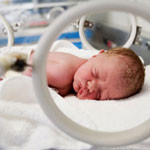Invention from Auto Mechanic May Prevent Birth Injuries
 An auto mechanic in Argentina has invented a device that could help to prevent fetal distress during the delivery process. The idea came to Jorge Oden in a dream, which became reality in just a few short years. The new device is now being tested in Argentina, with plans to manufacture and market the device in the United States on the way.
An auto mechanic in Argentina has invented a device that could help to prevent fetal distress during the delivery process. The idea came to Jorge Oden in a dream, which became reality in just a few short years. The new device is now being tested in Argentina, with plans to manufacture and market the device in the United States on the way.
Idea for device came during sleep
According to a report at the New York Times, the 59-year-old mechanic said the idea came to him one night while he was sleeping. Seven years prior, Oden had seen a YouTube video demonstrating how to extract a cork from a wine bottle using a plastic bag. That night at dinner, he won a bet with a buddy as he put the concept into practice, removing the cork from a bottle using only a bread bag.
Later that night, Oden awoke to the thought that the same concept could be used to help women deliver babies during a difficult birth process. The next day, Oden met with a local obstetrician who encouraged him to refine his idea for the delivery room. After developing the idea in his own kitchen at home, Oden got the attention of the chief of obstetrics at a hospital in Buenos Aires.
The Buenos Aires physician had a connection with someone at the World Health Organization, Dr. Merialdi, who worked further with Oden to develop the device. Merialdi arranged for testing at the Des Moines University simulation lab in 2008. The laboratory uses true-to-life mannequins to resemble the actual birthing process as closely as possible. Representatives from WHO were on hand, carefully observing the first official testing of the “Oden device.”
Device could have significant global implications
Oden’s invention could have serious implications worldwide, particularly in Third World countries where fetal distress and other birth injury complications are a common occurrence. Currently, the only options for hastening the delivery of babies in these areas are the use of forceps or vacuum extraction. Both devices carry a significant degree of risk to both the mother and child, including facial injuries, skull fractures and bleeding inside the skull.
In the U.S., where fetal distress often results in emergency C-section deliveries, this device could also help to lower the number of C-sections and their accompanying risks. The surgical means of delivery raises a woman’s risk for infection and extends the recovery after childbirth. The procedure also carries risk of injury to the newborn from the scalpel.
Device to be developed in United States
As the Oden device continues to be tested in Argentina, plans to manufacture the device in the United States are also underway. Beckton Dickinson and Company (BD), a medical technology company in New Jersey, has announced plans to partner with WHO to develop and launch the new birthing device. At this time, it is unsure when the device will officially launch on the U.S. market or how much BD will charge for their new product.
Fetal distress is a common cause of birth injuries and even stillbirth today. Devices like this, if it is proven to provide a safe, effective alternative for a vaginal birth, could reduce the number of babies injures during the labor and delivery process.


